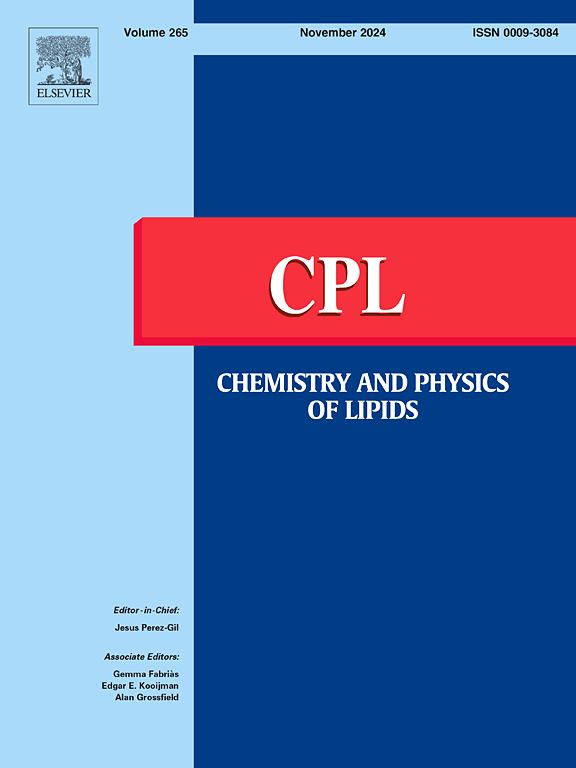Bamboo charcoal mitigates oxidised LDL-induced foam cell formation via molecular interaction and adsorption: Evidence from in silico and in vitro studies
IF 2.8
3区 生物学
Q2 BIOCHEMISTRY & MOLECULAR BIOLOGY
引用次数: 0
Abstract
Atherosclerosis is partially driven by the accumulation of oxidised low-density lipoprotein (oxLDL), which facilitates foam cell formation and vascular inflammation. This research examines the efficacy of bamboo charcoal (BC) as a bioactive agent for neutralising oxLDL using both in silico and in vitro methodologies. Molecular docking demonstrated significant binding affinities between BC and essential constituents of oxLDL, such as oxidised cholesterol and apolipoprotein B-100, facilitated by π–π stacking and electrostatic interactions. Molecular dynamics simulations demonstrated the stability of these complexes over 300 ns, indicating sustained molecular interactions. Quantum chemical calculations employing density functional theory showed a narrow HOMO–LUMO gap of 0.45 eV and a significant dipole moment of approximately 45 D, underscoring the reactive and polar characteristics of BC. Electrostatic potential mapping and thermodynamic analyses provided additional evidence for BC's spontaneous and stable binding to oxLDL components. The Oil Red O staining and total cholesterol estimation assays were conducted on oxLDL-treated RAW 264.7 macrophages in vitro indicated that BC significantly decreased macrophage-derived foam cell formation, thereby confirming its ability to reduce oxLDL-induced lipid accumulation. The findings suggest that BC functions as a physical adsorbent and a participant in direct chemical interactions with oxLDL, providing a dual-action therapeutic approach to atherosclerosis.
竹炭通过分子相互作用和吸附减轻氧化低密度脂蛋白诱导的泡沫细胞形成:来自硅和体外研究的证据
动脉粥样硬化部分是由氧化低密度脂蛋白(oxLDL)的积累驱动的,它促进泡沫细胞的形成和血管炎症。本研究利用硅中和法和体外法检测了竹炭(BC)作为生物活性剂中和oxLDL的功效。分子对接表明,BC与oxLDL的主要成分(如氧化胆固醇和载脂蛋白B-100)之间存在显著的结合亲和力,这是π -π堆叠和静电相互作用促成的。分子动力学模拟证明了这些配合物在300 ns以上的稳定性,表明持续的分子相互作用。采用密度泛函理论的量子化学计算表明,BC的HOMO-LUMO隙窄,为0.45 eV,偶极矩显著,约为45 D,强调了BC的活性和极性特征。静电电位映射和热力学分析进一步证明了BC与oxLDL组分的自发和稳定结合。体外对氧化低密度脂蛋白处理的RAW 264.7巨噬细胞进行Oil Red O染色和总胆固醇测定表明,BC显著减少巨噬细胞来源的泡沫细胞形成,从而证实了其减少氧化低密度脂蛋白诱导的脂质积累的能力。研究结果表明,BC作为一种物理吸附剂和oxLDL的直接化学相互作用的参与者,为动脉粥样硬化提供了双重作用的治疗方法。
本文章由计算机程序翻译,如有差异,请以英文原文为准。
求助全文
约1分钟内获得全文
求助全文
来源期刊

Chemistry and Physics of Lipids
生物-生化与分子生物学
CiteScore
7.60
自引率
2.90%
发文量
50
审稿时长
40 days
期刊介绍:
Chemistry and Physics of Lipids publishes research papers and review articles on chemical and physical aspects of lipids with primary emphasis on the relationship of these properties to biological functions and to biomedical applications.
Accordingly, the journal covers: advances in synthetic and analytical lipid methodology; mass-spectrometry of lipids; chemical and physical characterisation of isolated structures; thermodynamics, phase behaviour, topology and dynamics of lipid assemblies; physicochemical studies into lipid-lipid and lipid-protein interactions in lipoproteins and in natural and model membranes; movement of lipids within, across and between membranes; intracellular lipid transfer; structure-function relationships and the nature of lipid-derived second messengers; chemical, physical and functional alterations of lipids induced by free radicals; enzymatic and non-enzymatic mechanisms of lipid peroxidation in cells, tissues, biofluids; oxidative lipidomics; and the role of lipids in the regulation of membrane-dependent biological processes.
 求助内容:
求助内容: 应助结果提醒方式:
应助结果提醒方式:


